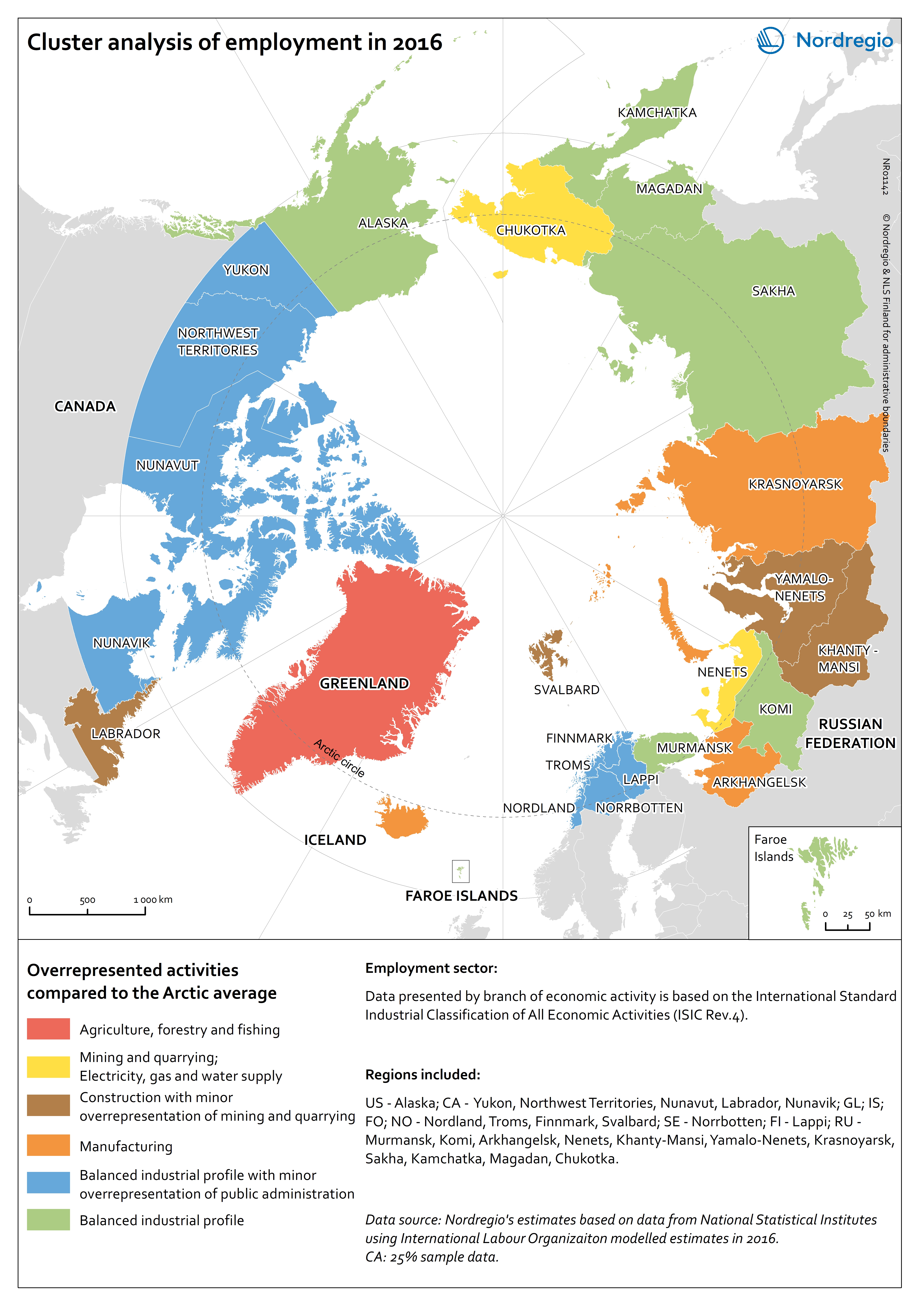The employment structure differs in the Arctic in terms of specific branch of economic activity.

The map shows how the employment structure of the regions in relation to the Arctic average. The method applied is cluster analysis in the software Philcarto. We calculated the share of employment in each economic branch at the regional level, as well as the Arctic average. We then compared the regional values with the Arctic average. This method allows identifying regions with an over-representation of employment in each economic branch.
Greenland is more dominated by agriculture, forestry and fishing branch due to the strong fishery industry. In the Russian Arctic, Nenets had high employment in mining and quarrying branch (oil and gas), while Chukotka had a high employment in electricity, gas and water supply. In Labrador (Canada), Svalbard (Norway), Yamalo-Nenets and Khanty-Mansi (Russian Federation), the primary dominant branch was construction. In addition, mining and quarrying activities were also over-represented in Labrador (Canada) with extraction of minerals and in Yamalo-Nenets and Khanty-Mansi in Russia with extraction of oil and gas. Manufacturing was a more prevailing branch for Iceland, Arkhangelsk and Krasnoyarsk (Russian Federation), including manufacturing of food products, wood, plastic, mineral and metal products, electrical and transport equipment. The majority of the Canadian Arctic and the Nordic Arctic regions had a balanced industrial profile with minor over-representation of public administration. Elsewhere in the Arctic, where large cities are located there were a balanced industrial profile.

